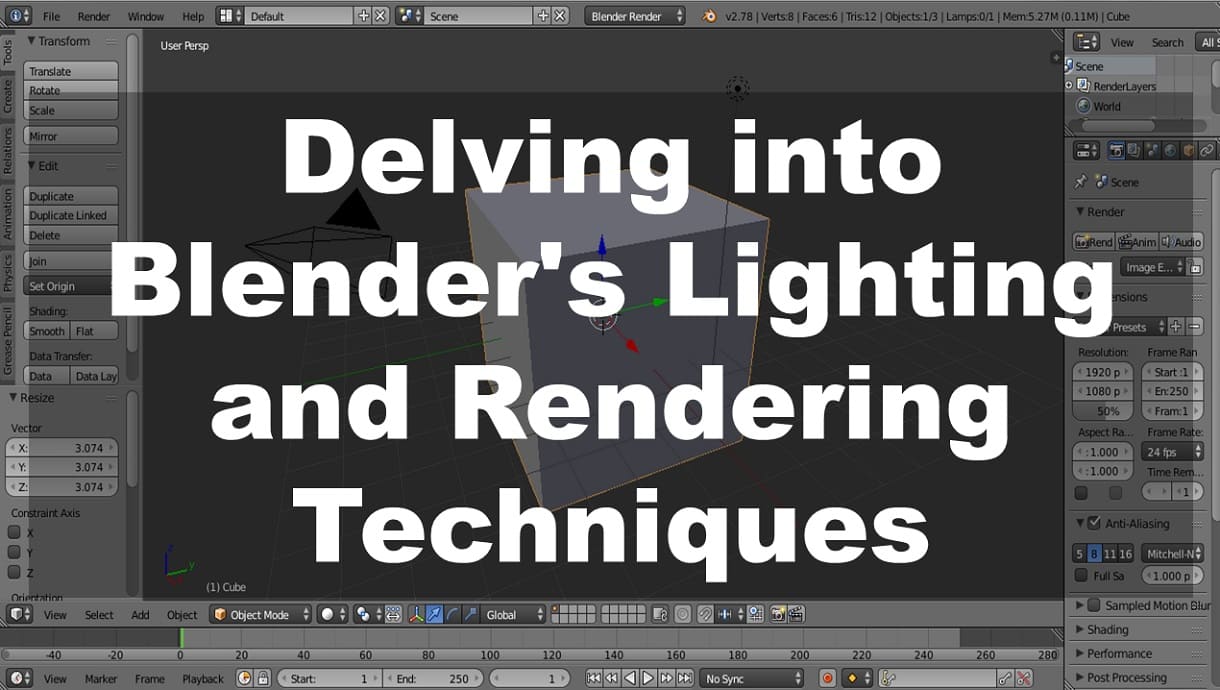
Lighting and rendering play a pivotal role in transforming 3D models into immersive and photorealistic scenes. In this comprehensive guide, we'll explore the intricacies of lighting and rendering in Blender, empowering you to create stunning visuals that captivate audiences.
Lighting sets the mood, defines the atmosphere, and highlights the focal points of your scene. Before delving into Blender's lighting techniques, it's essential to grasp some fundamental concepts:
1. Light Sources: Blender offers various types of light sources, including point lights, spotlights, area lights, and sunlight. Each light source has unique properties and effects on the scene's illumination.
2. Lighting Models: Blender employs different lighting models, such as Lambertian, Blinn-Phong, and Cook-Torrance, to simulate how light interacts with surfaces. Understanding lighting models helps you achieve realistic lighting effects and material appearances.
3. Lighting Setup: Proper lighting setup involves positioning light sources strategically, adjusting their intensity and color, and utilizing light modifiers to control the distribution and quality of light in the scene.
Also Read - Mastering Blender's Texturing and UV Mapping: Elevate Your 3D Creations
Rendering is the process of converting 3D scenes into 2D images or animations. Blender's rendering engine offers a multitude of settings and options to achieve desired visual results. Let's explore some key rendering techniques:
1. Rendering Engines: Blender supports multiple rendering engines, including Cycles and Eevee. Cycles is a powerful, physically-based renderer known for its photorealistic results, while Eevee is a real-time renderer optimized for interactive and fast rendering.
2. Global Illumination: Global illumination techniques, such as ambient occlusion, indirect lighting, and environment lighting, contribute to realistic light interactions and scene illumination. Blender's ray tracing capabilities enable accurate simulation of light bounces and reflections.
3. Render Settings: Blender provides extensive render settings for controlling resolution, sampling, denoising, and output formats. Fine-tuning these settings ensures optimal rendering quality and performance.
Once you've mastered the basics, you can explore advanced lighting and rendering techniques to enhance visual fidelity and realism:
1. HDR Lighting: High Dynamic Range (HDR) lighting allows you to use HDR images as environment maps, providing realistic lighting and reflections based on real-world environments.
2. Volumetric Lighting: Volumetric lighting simulates the interaction of light with atmospheric particles, such as fog, smoke, and dust, adding depth and atmosphere to your scenes.
3. Compositing and Post-Processing: Blender's compositing nodes enable you to fine-tune rendered images, apply effects, and integrate 3D elements seamlessly into live-action footage.
Also Read - Unleashing the Power of Blender's Animation Tools
In conclusion, mastering Blender's lighting and rendering techniques is essential for creating visually stunning and immersive 3D scenes. By understanding lighting principles, mastering rendering techniques, and exploring advanced effects, you'll elevate your projects to new heights of realism and artistic expression. Stay tuned for more insights into Blender's advanced features and techniques. Happy rendering!
Comments